Charles M. Kozierok The TCP-IP Guide
Подождите немного. Документ загружается.

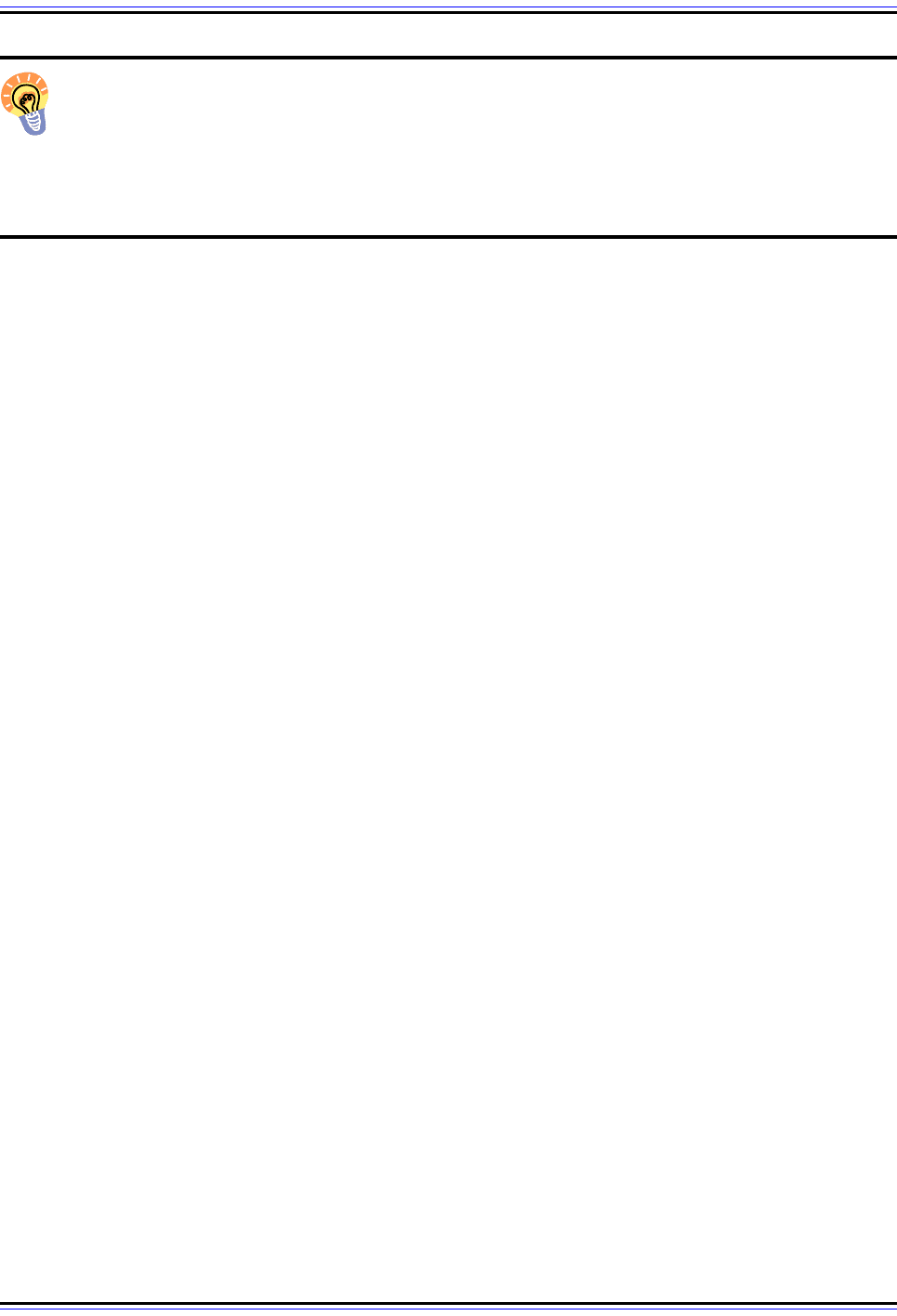
The TCP/IP Guide - Version 3.0 (Contents) ` 1171 _ © 2001-2005 Charles M. Kozierok. All Rights Reserved.
Key Concept: Requests from BOOTP clients are normally sent broadcast, to reach
any available DHCP server. However, there are certain exceptions, such as in lease
renewal, when a request is sent directly to a known server. DHCP servers can send
their replies either broadcast to the special port number reserved for DHCP clients, or
unicast using layer two. The DHCP standards specify that layer two delivery should be used
when possible to avoid unnecessary broadcast traffic.
Retransmission of Lost Messages
Using UDP provides benefits such as simplicity and efficiency to DHCP, but since UDP is
unreliable, there is no guarantee that messages will get to their destination. This can lead to
potential confusion on the part of a client. Consider, for example, a client sending a
DHCPDISCOVER message and waiting for DHCPOFFER messages in reply. If it gets no
response, does this mean that there is no DHCP server willing to offer it service, or simply
that its DHCPDISCOVER got “munched” somewhere on the network? The same applies to
most other request/reply sequences, such as a client waiting for a DHCPACK or DHCPNAK
in reply to a DHCPREQUEST or DHCPINFORM.
The fact that messages can be lost means that DHCP itself must keep track of messages
sent and if there is no response, retransmit them. Since there are so many message
exchanges in DHCP, there is much more that can “go wrong”. As in BOOTP, DHCP puts
responsibility for this squarely on the shoulders of the client. This makes sense, since the
client initiates contact and can most easily keep track of messages sent and retransmit
them when needed. A server can't know when a client's request is lost, but a client can
react to a server's reply being lost.
In any request/reply message exchange, the client uses a retransmission timer that is set to
a period of time that represents how long it is reasonable for it to wait for a response. If no
reply is received by the time the timer expires, the client assumes that either its request or
the response coming back was lost. The client then retransmits the request. If this request
again elicits no reply, the client will continue retransmitting for a period of time.
To prevent large numbers of DHCP clients from retransmitting requests simultaneously
(which would potentially clog the network), the client must use a randomized exponential
backoff algorithm to determine when exactly a retransmission is made. As in BOOTP, this is
similar to the technique used to recover from collisions in Ethernet. The DHCP standard
specifies that the delay should be based on the speed of the underlying network between
the client and the server. More specifically, it says that in a standard Ethernet network, the
first retransmission should be delayed 4 seconds plus or minus a random value from 0 to 1
second—in other words, some value is chosen between 3 and 5 seconds. The delay is then
doubled with each subsequent transmission (7 to 9 seconds, then 15 to 17 seconds and so
forth) up to a maximum of 64 +/- 1 second.
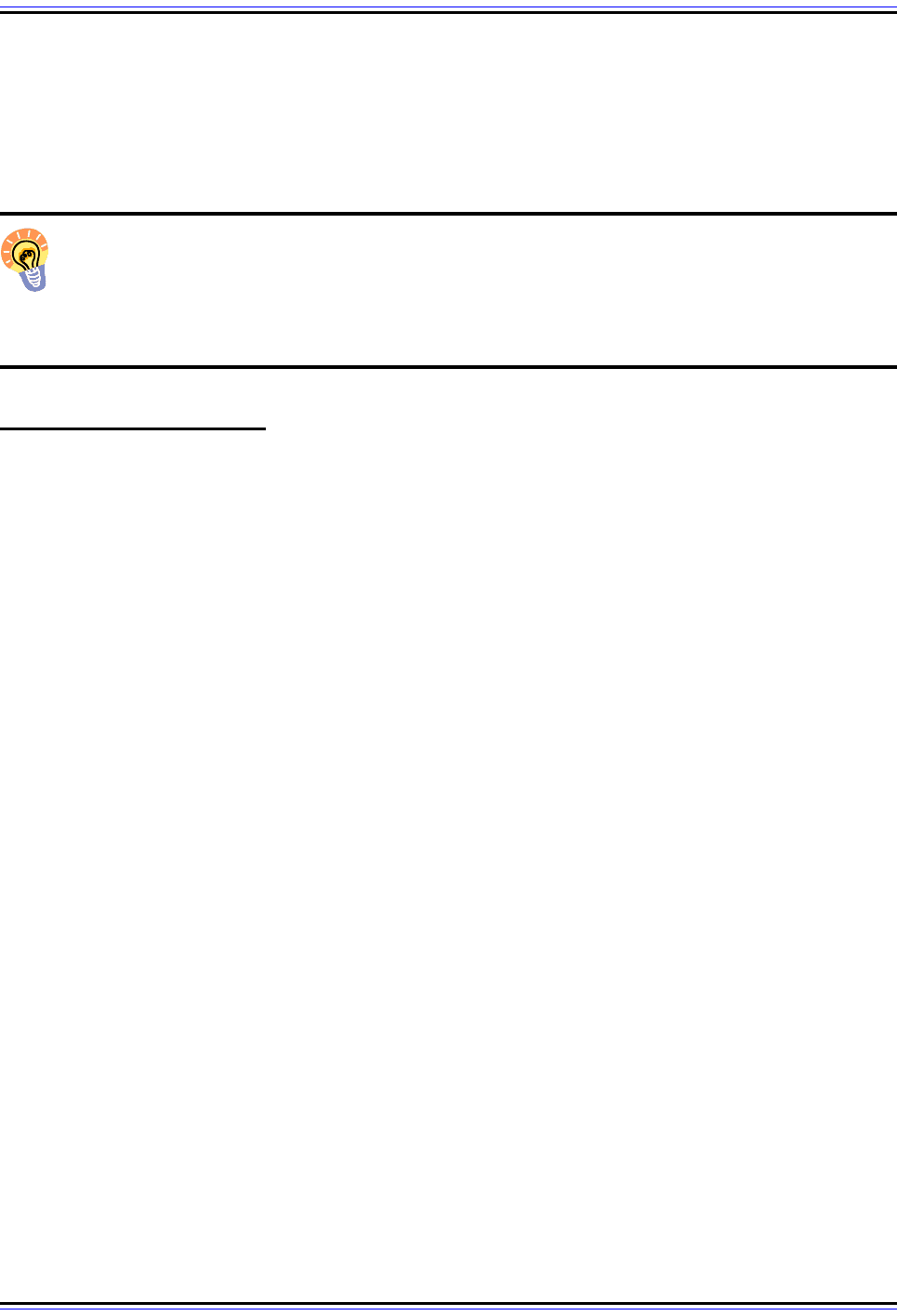
The TCP/IP Guide - Version 3.0 (Contents) ` 1172 _ © 2001-2005 Charles M. Kozierok. All Rights Reserved.
To prevent it from retrying endlessly, the client normally has logic that limits the number of
retries. The amount of time that retransmissions go on depends on the type of request
being sent; that is, what process is being undertaken. If a client is forced to “give up” due to
too many retries it will generally either take some sort of default action or generate an error
message.
Key Concept: Like BOOTP, DHCP uses UDP for transport, which provide no
reliability features. DHCP clients must detect when requests are sent and no
response is received, and retransmit requests periodically. Special logic is used to
prevent clients from sending excessive numbers of requests during difficult network
conditions.
DHCP Message Format
When DHCP was created, its developers had a bit of an issue related to how exactly they
should structure DHCP messages. BOOTP was already widely used, and maintaining
compatibility between DHCP and BOOTP was an important goal. This meant that DHCP's
designers needed to continue using the existing BOOTP message format. However, DHCP
has more functionality than BOOTP, and this means more information than can easily be
held in the limited BOOTP message format.
This apparent contradiction was resolved in two ways. First, the existing BOOTP message
format was maintained for basic functionality, but DHCP clients and servers were
programmed to use the BOOTP message fields in slightly different ways. Second, the
BOOTP vendor extensions were formalized and became DHCP options, as we'll see in the
next two topics. Despite the name “options”, some of these are in fact the additional fields
needed for basic DHCP functionality, and are quite mandatory. ☺
With this dual approach, DHCP devices have access to the extra information they need.
Meanwhile, the basic field format is unchanged, which allows DHCP servers to commu-
nicate with older BOOTP clients, which ignore the extra DHCP information that doesn't
relate to them. See the topic on BOOTP/DHCP interoperability for more.
Table 190 describes the format of DHCP messages, which is also shown in Figure 267. In
the table, I have specifically indicated which fields are used in DHCP in a manner similar to
how they are used in BOOTP, and which are significantly different.
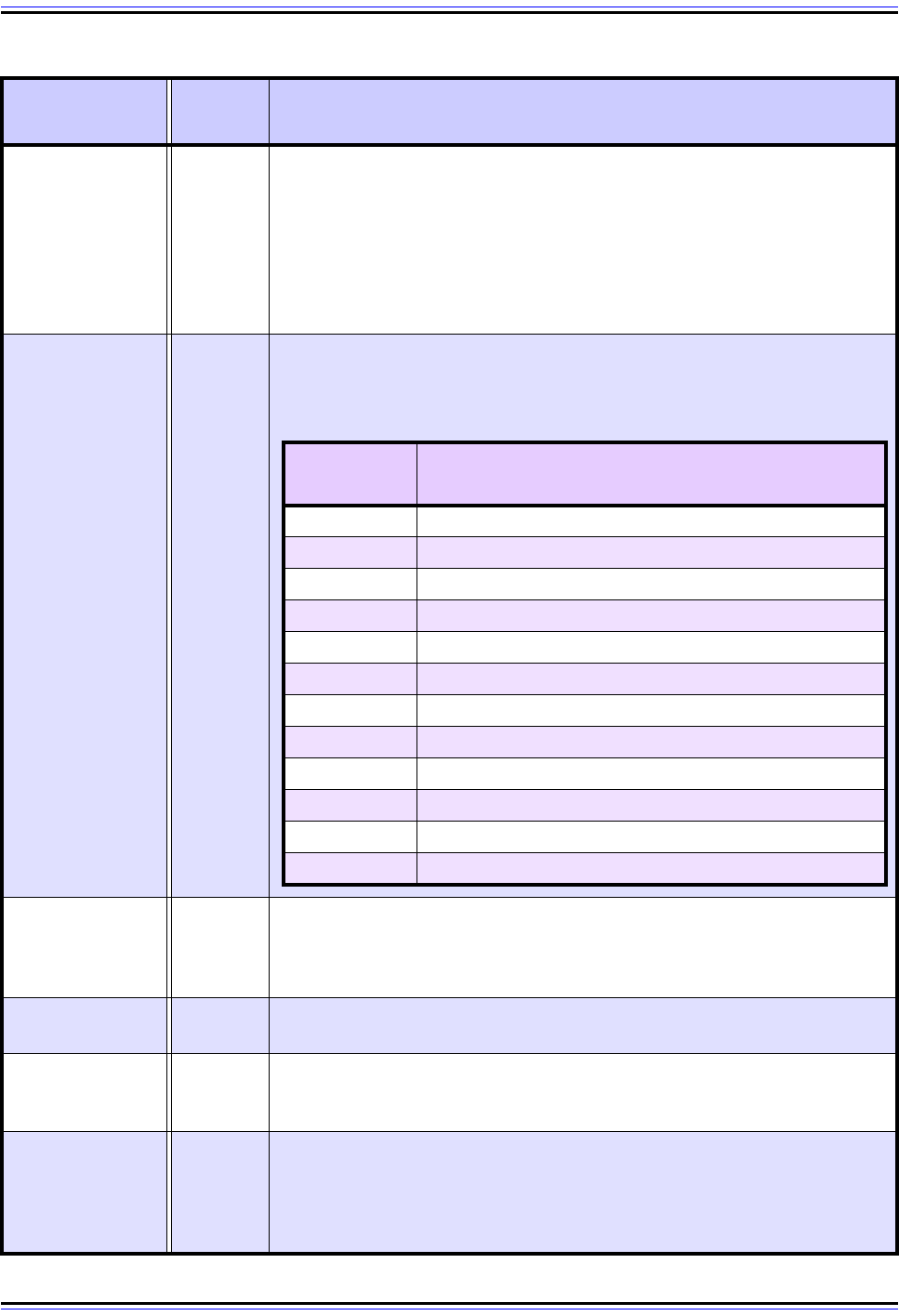
The TCP/IP Guide - Version 3.0 (Contents) ` 1173 _ © 2001-2005 Charles M. Kozierok. All Rights Reserved.
Table 190: DHCP Message Format (Page 1 of 3)
Field Name
Size
(bytes)
Description
Op 1
Operation Code: Specifies the general type of message. A value of 1
indicates a request message, while a value of 2 is a reply message.
This code represents the general category of the DHCP message; a client
sending a request to a server uses an Op code of 1, while a server replying
uses a code of 2. So, for example, a DHCPREQUEST would be a request,
while a DHCPACK or DHCPNAK is a reply. The actual specific type of
DHCP message is encoded using the DHCP Message Type option.
HType 1
HLen 1
Hardware Address Length: Specifies how long hardware addresses are
in this message. For Ethernet or other networks using IEEE 802 MAC
addresses, the value is 6. This is also the same as a field in the ARP field
format, HLN.
Hops 1
Hops: Set to 0 by a client before transmitting a request and used by relay
agents to control the forwarding of BOOTP and/or DHCP messages.
XID 4
Transaction Identifier: A 32-bit identification field generated by the client,
to allow it to match up the request with replies received from DHCP
servers.
Secs 2
Seconds: In BOOTP this field was vaguely defined and not always used.
For DHCP, it is defined as the number of seconds elapsed since a client
began an attempt to acquire or renew a lease. This may be used by a busy
DHCP server to prioritize replies when multiple client requests are
outstanding.
H
ar
d
ware
T
ype:
Thi
s
fi
e
ld
spec
ifi
es
th
e
t
ype o
f
h
ar
d
ware use
d
f
or
th
e
l
oca
l
network, and is used in exactly the same way as the equivalent field (HRD)
in the Address Resolution Protocol (ARP) message format. Some of the
most common values for this field:
HType Field
Value
Hardware Type
1 Ethernet (10 Mb)
6 IEEE 802 Networks
7 ARCNET
11 LocalTalk
12 LocalNet (IBM PCNet or SYTEK LocalNET)
14 SMDS
15 Frame Relay
16 Asynchronous Transfer Mode (ATM)
17 HDLC
18 Fibre Channel
19 Asynchronous Transfer Mode (ATM)
20 Serial Line
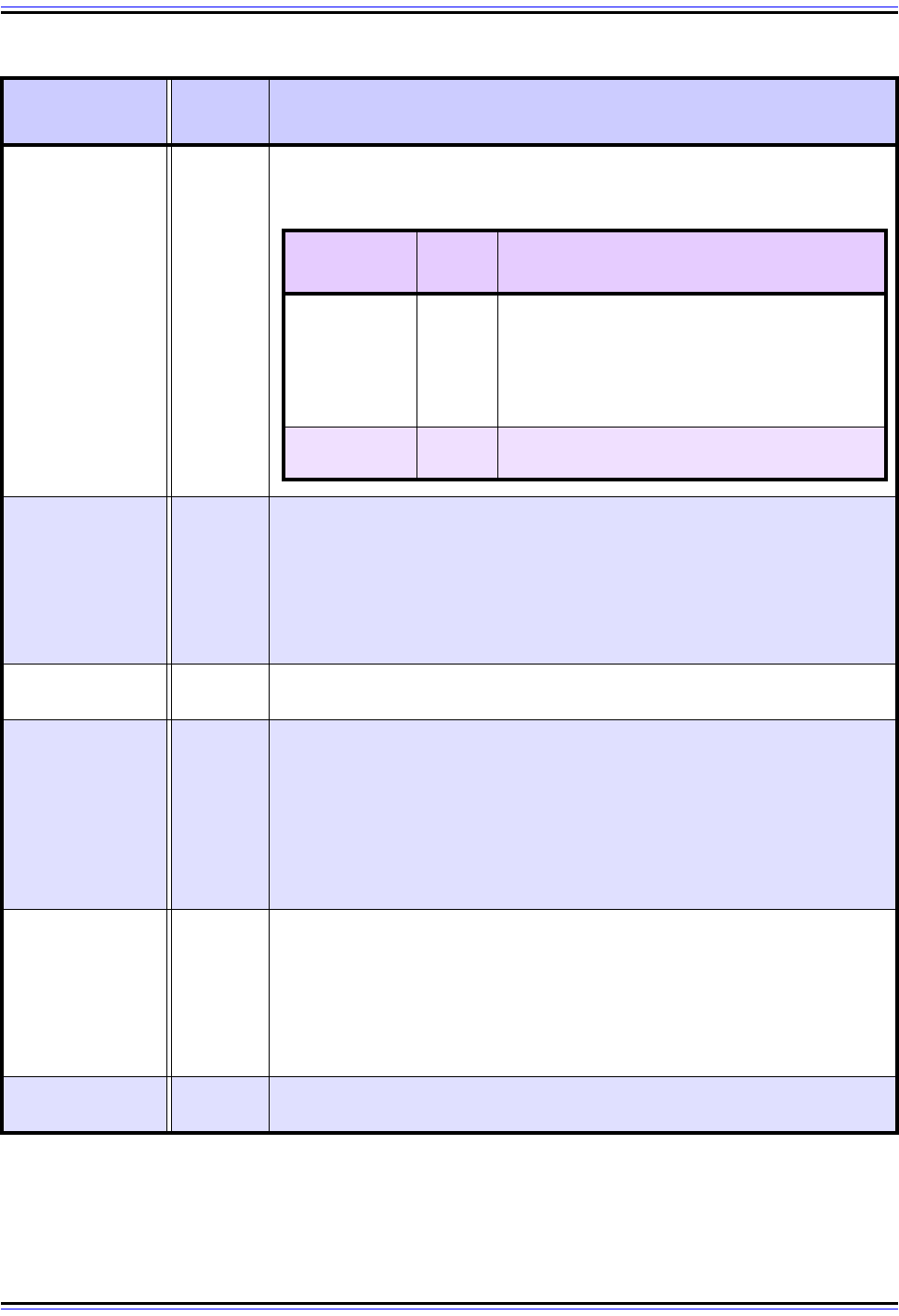
The TCP/IP Guide - Version 3.0 (Contents) ` 1174 _ © 2001-2005 Charles M. Kozierok. All Rights Reserved.
Flags 2
CIAddr 4
Client IP Address: The client puts its own current IP address in this field if
and only if it has a valid IP address while in the BOUND, RENEWING or
REBINDING states; otherwise, it sets the field to 0. The client can only use
this field when its address is actually valid and usable, not during the
process of acquiring an address. Specifically, the client does not use this
field to request a particular IP address in a lease; it uses the Requested IP
Address DHCP option.
YIAddr 4
“Your” IP Address: The IP address that the server is assigning to the
client.
SIAddr 4
Server IP Address: The meaning of this field is slightly changed in DHCP.
In BOOTP, it is the IP address of the BOOTP server sending a
BOOTREPLY message. In DHCP, it is the address of the server that the
client should use for the next step in the bootstrap process, which may or
may not be the server sending this reply.
The sending server always includes its own IP address in the Server
Identifier DHCP option.
GIAddr 4
Gateway IP Address: This field is used just as it is in BOOTP, to route
BOOTP messages when BOOTP relay agents are involved to facilitate the
communication of BOOTP requests and replies between a client and a
server on different subnets or networks. See the topic on DHCP relaying.
As with BOOTP, this field is not used by clients and does not represent the
server giving the client the address of a default router (that's done using
the Router DHCP option).
CHAddr 16
Client Hardware Address: The hardware (layer two) address of the client,
which is used for identification and communication.
Table 190: DHCP Message Format (Page 2 of 3)
Field Name
Size
(bytes)
Description
Fl
ags:
Thi
s correspon
d
s
t
o
th
e
f
ormer
l
y emp
t
y
t
wo-
b
y
t
e
fi
e
ld
i
n
th
e
BOOTP
message format defined by RFC 951, which was redefined as a Flags field
in RFC 1542. The field presently contains just one flag subfield, as follows:
Subfield
Name
Size
(bytes)
Description
B
1/8
(1 bit)
Broadcast Flag: A client that doesn't know its own
IP address at the time it sends its request sets this
flag to 1. This serves as an immediate indicator to
the DHCP server or relay agent that receives the
request that it should send its reply back by
broadcast.
Reserved
1 7/8
(15 bits)
Reserved: Set to zero and not used.
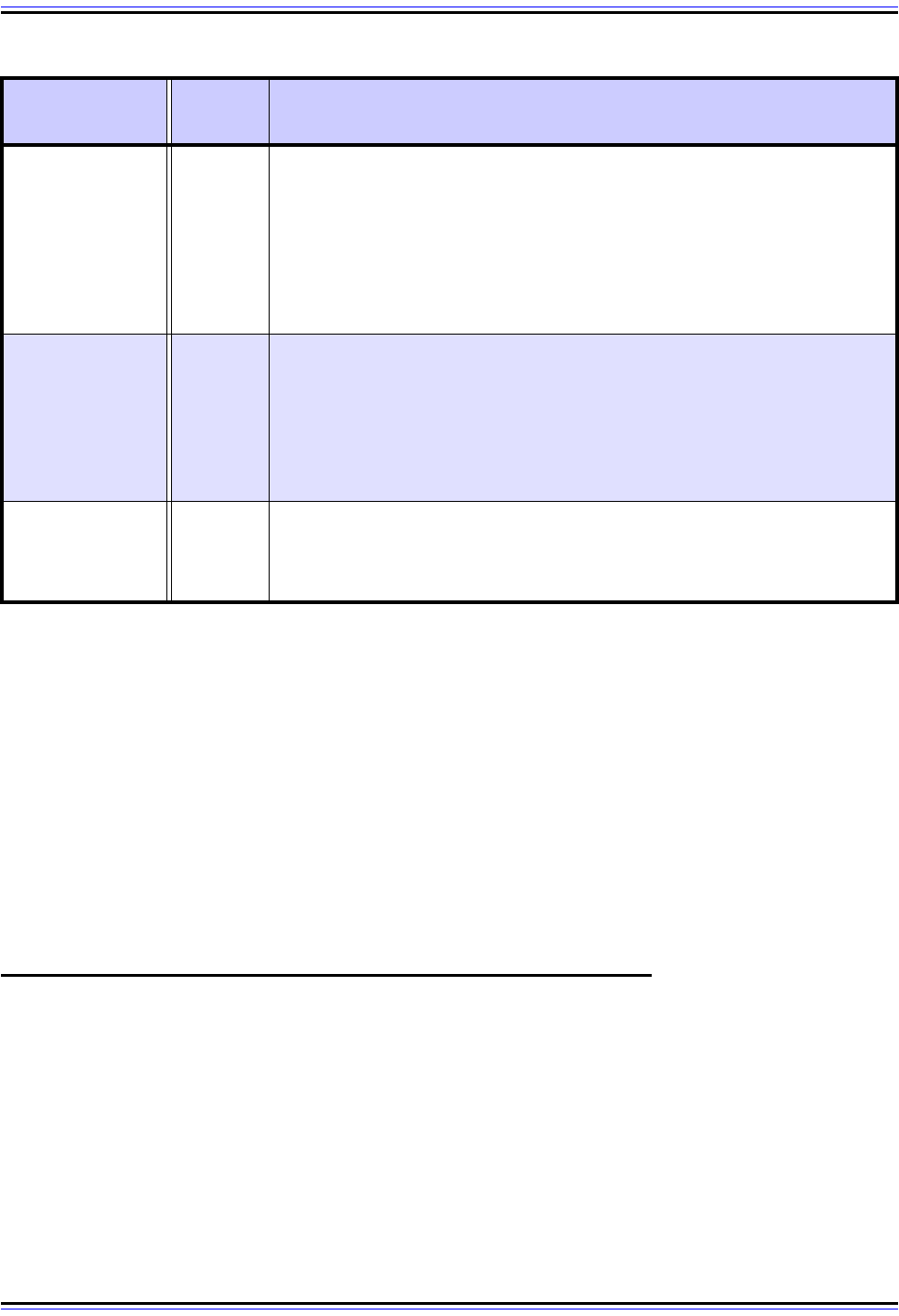
The TCP/IP Guide - Version 3.0 (Contents) ` 1175 _ © 2001-2005 Charles M. Kozierok. All Rights Reserved.
The DHCP standard does not specify the details of how DHCP messages are encapsulated
within UDP. I would assume that due to the other similarities to BOOTP, DHCP maintains
BOOTP's optional use of message checksums. It also most likely assumes that messages
will not be fragmented (sent with the Do Not Fragment bit set to 1 in the IP datagram). This
is to allow BOOTP clients to avoid the complexity of reassembling fragmented messages.
I should point out, however, that DHCP messages are variable in length, compared to
BOOTP's fixed message size. This was done by changing BOOTP's 64-byte Vend field into
the variable-length Options field. DHCP relies on options much more than BOOTP does,
and a device must be capable of accepting a message with an Options field at least 312
bytes in length. The SName and File fields may also be used to carry options, as described
in the next topic.
DHCP Options, Option Format and "Option Overloading"
When BOOTP was first developed, its message format included a 64-byte Vend field, called
the Vendor-Specific Area. The idea behind this field was to provide flexibility to the protocol.
The BOOTP standard did not define any specific way of using this field. Instead, the field
was left open for the creators of different types of hardware to use it to customize BOOTP to
meet the needs of their clients and/or servers.
SName 64
Server Name: The server sending a DHCPOFFER or DHCPACK message
may optionally put its name in this field. This can be a simple text
“nickname” or a fully-qualified DNS domain name (such as
“myserver.organization.org”).
This field may also be used to carry DHCP options, using the “option
overload” feature, indicated by the value of the DHCP Option Overload
option.
File 128
Boot Filename: Optionally used by a client to request a particular type of
boot file in a DHCPDISCOVER message. Used by a server in a
DHCPOFFER to fully specify a boot file directory path and filename.
This field may also be used to carry DHCP options, using the “option
overload” feature, indicated by the value of the DHCP Option Overload
option.
Options Variable
Options: Holds DHCP options, including several parameters required for
basic DHCP operation. Note that this field was fixed at 64 bytes in length in
BOOTP but is variable in length in DHCP. See the next two topics for more
information. This field may be used by both client and server.
Table 190: DHCP Message Format (Page 3 of 3)
Field Name
Size
(bytes)
Description
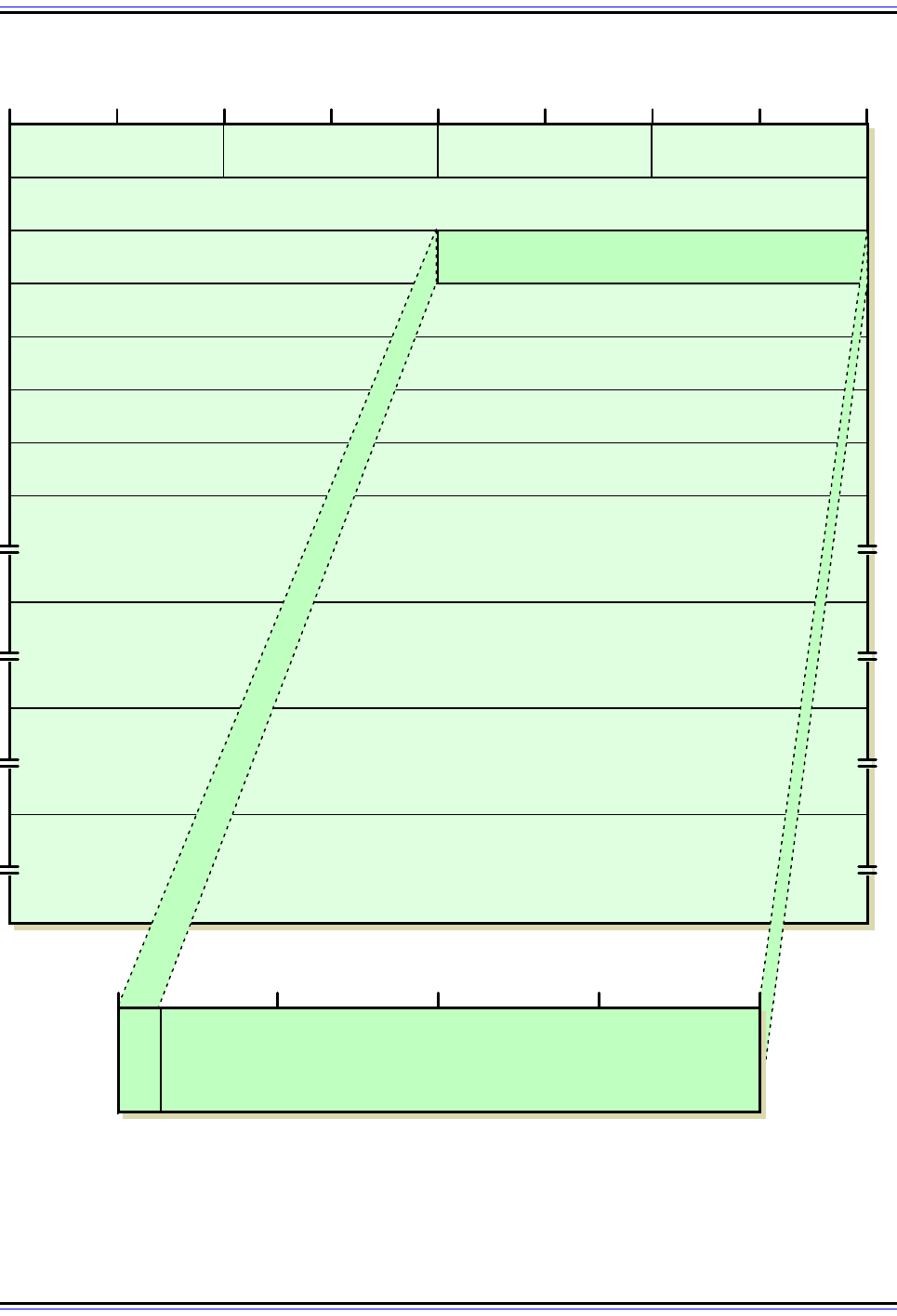
The TCP/IP Guide - Version 3.0 (Contents) ` 1176 _ © 2001-2005 Charles M. Kozierok. All Rights Reserved.
Figure 267: DHCP Message Format
Operation Code Har dware T ype
Hardware Address
Length
Hops
Transaction Identifier
Seconds Flags
Server Name (SName)
(64 bytes)
May also be used for Options, if option overloading is enabled.
Boot Filename
(128 bytes)
May also be used for Options, if option overloading is enabled.
Options
(Variable Size)
4 8 12 16 20 24 28 320
Reserved
4 8 12 160
Client IP Address (CIAddr)
"Your" IP Address (YIAddr)
Server IP Address (SIAddr)
Gateway IP Address (GIAddr)
Client Hardware Address (CHAddr)
(16 bytes)
Broad-
cast
Flag
(B)
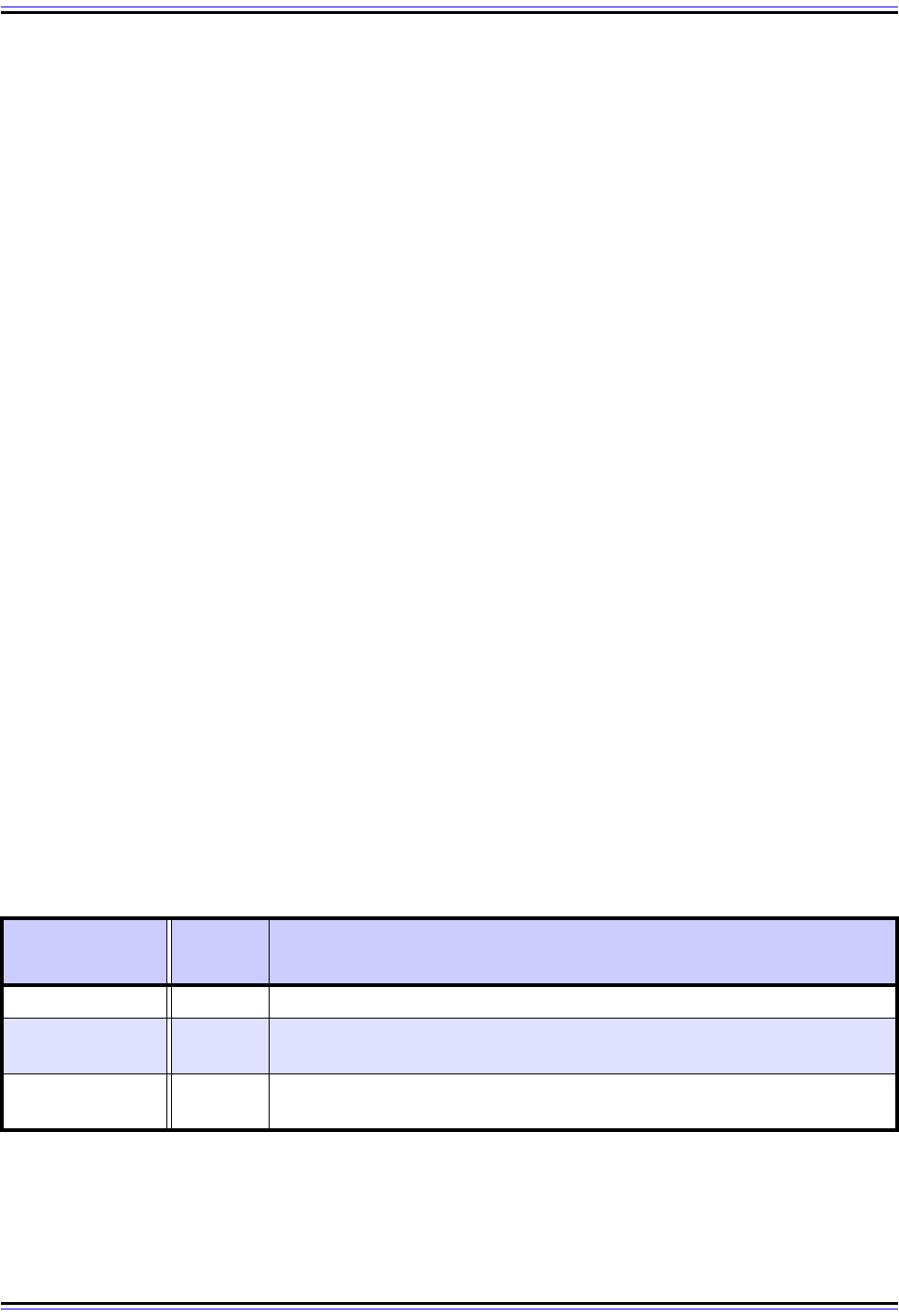
The TCP/IP Guide - Version 3.0 (Contents) ` 1177 _ © 2001-2005 Charles M. Kozierok. All Rights Reserved.
Including this sort of “undefined” field is always a good idea because it makes a protocol
easily extensible. That is, allows the protocol to be easily enhanced in the future through the
definition of new fields while not disturbing any existing fields. The problem with the BOOTP
Vendor-Specific Area, however, is that the extensibility was in fact vendor-specific. It was
useful only for special fields that were particular to a single vendor.
What was really needed was a way to define new fields for general purpose, vendor-
independent parameter communication, but there was no field in the BOOTP message
format that would let this happen. The solution came in the form of RFC 1048, which
defined a technique called BOOTP vendor information extensions. This method redefines
the vendor-specific area to allow it to carry general parameters between client and server.
This idea was so successful that it largely replaced the older vendor-specific use of the
Vend field.
Options and Option Format
DHCP maintains, formalizes and further extends the idea of using the Vend field to carry
general-purpose parameters. Instead of being called vendor information extensions, or
vendor information fields, these fields are now called simply DHCP options. Similarly, the
Vend field has been renamed the Options field, reflecting its new role as a way of conveying
vendor-independent options between client and server.
Keeping with the desire to maintain compatibility between BOOTP and DHCP, the DHCP
Options field is in most ways the same as the vendor-independent interpretation of the
BOOTP Vend field introduced by RFC 1048. The first four bytes of the field still carry the
“magic cookie” value “99.130.83.99” to identify the information as vendor-independent
option fields. The rest of the Option field consists of one or more subfields, each of which
has a “type, length, value” (TLV-encoded) substructure as in BOOTP. The main differences
between BOOTP vendor information fields and DHCP options are the field names and the
fact that the DHCP Options field is variable in length where the BOOTP Vend field is fixed at
64 bytes. The structure of the DHCP Options field as a whole is shown in Figure 268; the
subfield names of each option are described in Table 191
.
All of the DHCP options follow the format of Table 191, except for two special cases, again
the same as BOOTP. A Code value of 0 is used as a pad, when subfields need to be
aligned on word boundaries; it contains no information. The value 255 is used to mark the
end of the vendor information fields. Both of these codes contain no actual data, so to save
Table 191: DHCP Option Format
Subfield Name
Size
(bytes)
Description
Code 1 Option Code: A single octet that specifies the option type.
Len 1
Option Length: The number of bytes in this particular option. This does
not include the two bytes for the Code and Len fields.
Data Variable
Option Data: The data being sent, which has a length indicated by the Len
subfield, and which is interpreted based on the Code subfield.
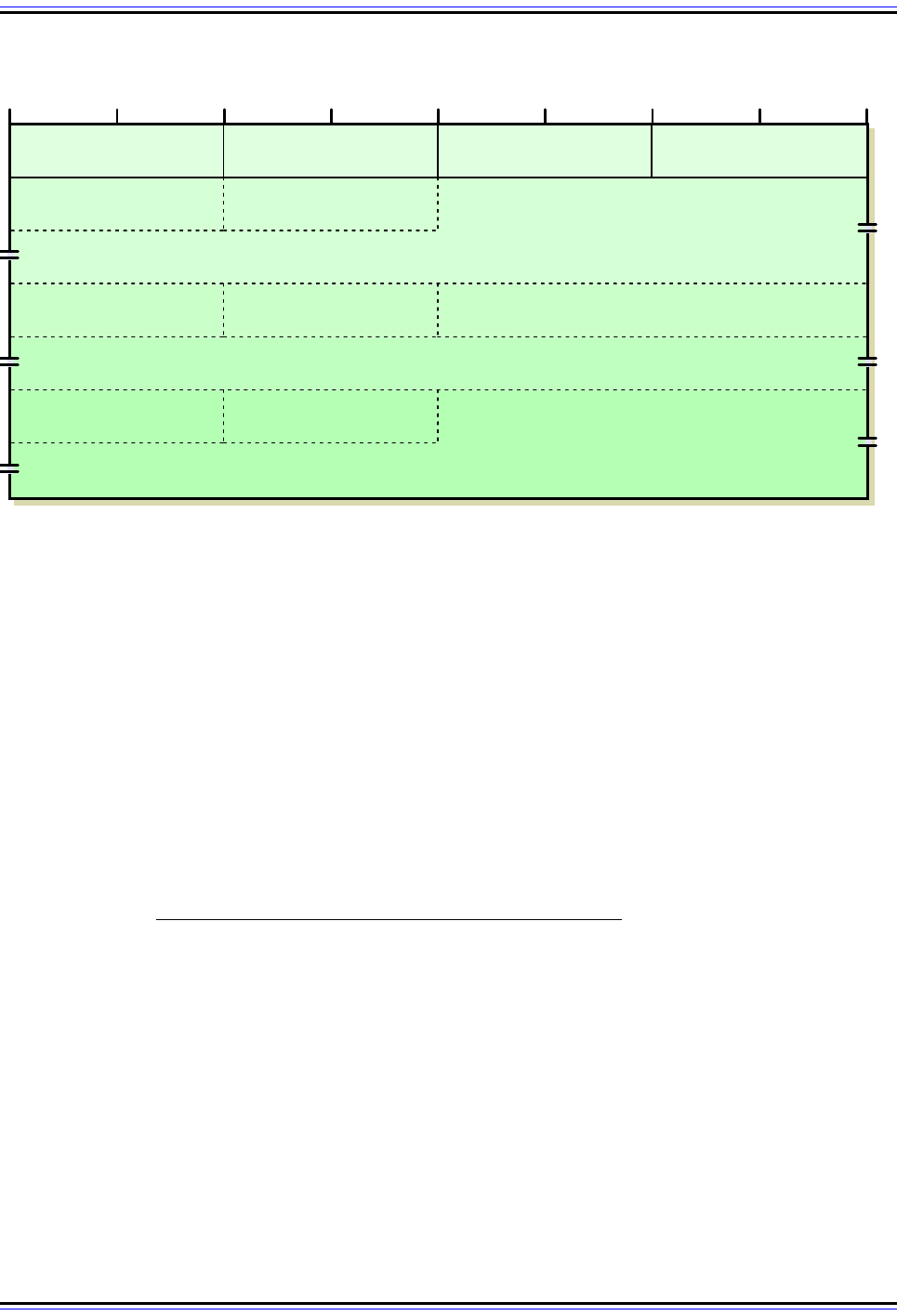
The TCP/IP Guide - Version 3.0 (Contents) ` 1178 _ © 2001-2005 Charles M. Kozierok. All Rights Reserved.
space, when either is used just the single Code value is included; the Len and Data fields
are omitted. A device seeing a Code value of 0 just skips it as filler; a device seeing a Code
value of 255 knows it has reached the end of the fields in this Options field.
Option Categories
Before DHCP was invented, a series of BOOTP standards was published defining the
current list of BOOTP vendor information extensions. When DHCP was developed, a single
standard was created that merged both BOOTP vendor information extensions and DHCP
options, since again, they are basically the same. The most recent of these is RFC 2132,
entitled (ta-da!) DHCP Options and BOOTP Vendor Extensions
.
RFC 2132 lists several dozen fields that can be used either as DHCP options or BOOTP
vendor information fields. For easier “digestion”, these are broken into several categories.
In addition, there is also a set of fields that are used only in DHCP, not in BOOTP. Despite
being called “options”, only some really are optional; others are necessary for the basic
Figure 268: DHCP Options Field Format
The format of the DHCP Options field is, unsurprisingly, very similar to that of the BOOTP Vendor-Specific
Area, as shown in Figure 257. The Options field begins with the same four-byte “magic cookie” and then
contains a number of variable-length option fields. Each option has the format described in Table 191.
"Magic Cookie"
Byte #1 (99)
"Magic Cookie"
Byte #2 (130)
"Magic Cookie"
Byte #3 (83)
"Magic Cookie"
Byte #4 (99)
Option Code #1 Option Length #1
Option Data #1
Option Code #2 Option Length #2 Option Data #2
Option Code #N Option Length #N
Option Data #N
4 8 12 16 20 24 28 320
...
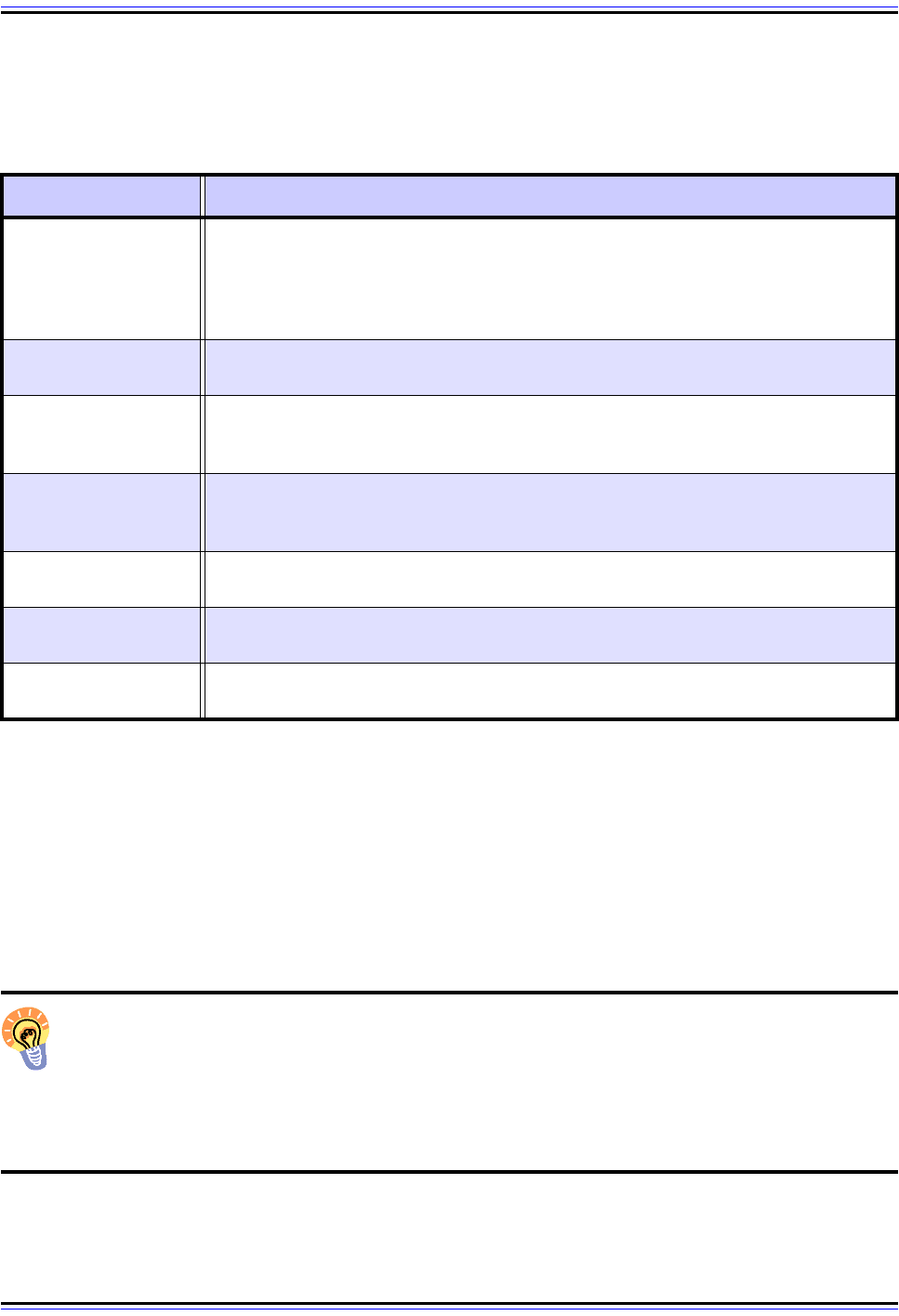
The TCP/IP Guide - Version 3.0 (Contents) ` 1179 _ © 2001-2005 Charles M. Kozierok. All Rights Reserved.
operation of DHCP. They are carried as “option” fields for only one reason: to allow DHCP
to keep using the same basic message format as BOOTP for compatibility. Table 192
summarizes the categories used for DHCP options.
The next topic provides a complete list of the DHCP options defined in RFC 2132. Due to
the popularity of DHCP, several other options have been defined since that standard was
published. Each time a new option is created, documenting it would have required a new
successor to RFC 2132, which would be confusing and time-consuming. Instead, the
maintenance of these options / extensions has been moved from the RFC process to a set
of files maintained by the IANA, just like so many other parameters. There is also a process
by which a developer can request additional standard extensions to be added to DHCP.
This is described in section 10 of RFC 2132.
Key Concept: DHCP takes BOOTP’s vendor information extensions and formalizes
them into an official feature called DHCP options. The BOOTP Vendor-Specific Area
field becomes the DHCP Options field, and can contain an arbitrary number of
parameters to be sent from the server to the client. Some of these include pieces of data
that are actually mandatory for the successful operation of DHCP. There are several dozen
DHCP options, which are divided into functional categories.
Table 192: DHCP Option Categories
Option Category Description
RFC 1497 Vendor
Extensions
The BOOTP vendor extensions defined in RFC 1497, the last RFC describing
vendor extension fields that was BOOTP-specific (before DHCP was created). For
easier reference, these were kept in a single group when DHCP options were
created, even though some of the functions they represent might better belong in
other categories.
IP Layer
Parameters Per Host
Parameters that control the operation of the Internet Protocol on a host, which
affect the host as a whole and are not interface-specific.
IP Layer
Parameters Per
Interface
Parameters that affect the operation of the Internet Protocol for a particular
interface of a host. (Some devices have only one interface, of course, while others
have more.)
Link Layer
Parameters Per
Interface
Parameters that affect the data link layer operation of a host, on a per-interface
basis.
TCP Parameters
Parameters that impact the operation of the TCP layer; specified on a per-interface
basis.
Application and
Service Parameters
Parameters used to configure or control the operation of various miscellaneous
applications or services.
DHCP Extensions
Parameters that are DHCP-specific, and used to control the operation of the DHCP
protocol itself.
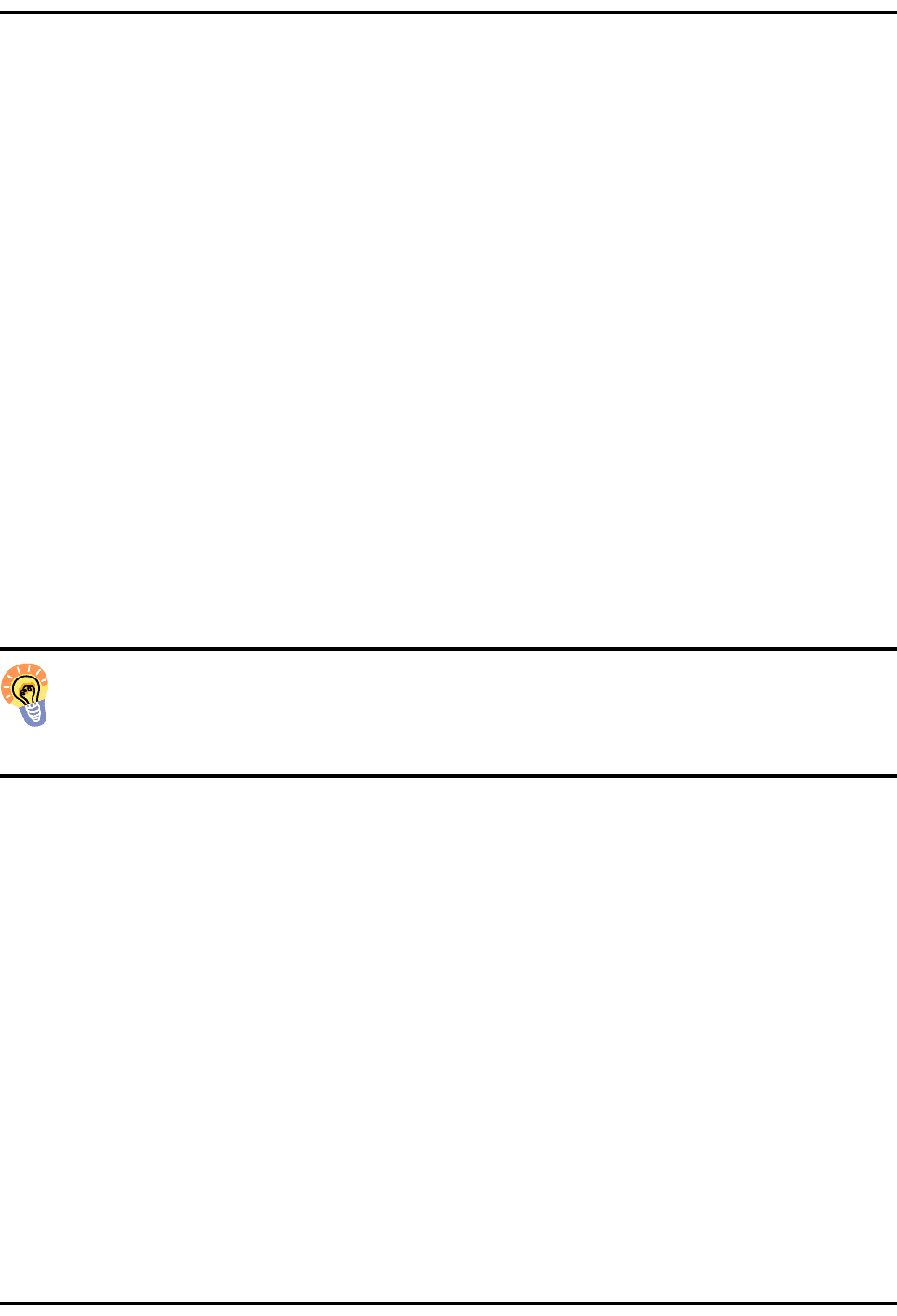
The TCP/IP Guide - Version 3.0 (Contents) ` 1180 _ © 2001-2005 Charles M. Kozierok. All Rights Reserved.
Option Overloading
Since DHCP relies so much more on the use of options than BOOTP did, the size of the
Options field could theoretically grow quite large. However, since DHCP is using UDP for
transport, the overall size of a message is limited. This could theoretically have led to a
situation where a message might run out of room and be unable to carry all its options.
Meanwhile, there are two “spacious” fields in the message format, SName and File, at 64
and 128 bytes respectively. These fields might not even be needed in some cases, because
many devices use DHCP for getting a lease and parameters and not to download a boot
image. Even if they are needed, they might be carrying much less information than their
large fixed size allows.
To make better use of the total space in the message format, DHCP includes a special
feature called option overloading, which allows these two fields to be used to carry more
option fields instead of their conventional information. Use of this option is itself indicated
through the use of a DHCP option, Option Overload, which tells a device receiving a
message how to interpret the two fields. If option overload is used, the SName and/or File
fields are read and interpreted in the same way as the Options field, after all options in the
Option field are parsed. If the message actually does need to carry a server name or boot
file, these are included as separate options (number 66 and number 67, respectively),
which are variable-length and can therefore be made exactly the length needed. Again, see
the next topic for details.
Key Concept: Since DHCP messages can contain so many options, a special
feature called option overloading was created. When enabled, overloading allows
options to make use of the large SName and File fields in the DHCP message format
for options.
Combining Vendor-Independent and Vendor-Specific Information
Incidentally, the creators of DHCP did recognize that even though vendor-independent
options are important, a vendor might want to be able to send vendor-specific information
just as the original BOOTP defined. To this end, they created a DHCP option called Vendor
Specific Information. This option allows a vendor to encapsulate a set of vendor-specific
option fields within the normal DHCP option structure.
In essence, you can think of this as a way of nesting a conventional BOOTP Vend field (of
variable length) within a single DHCP option. Other DHCP options can be carried simulta-
neously, subject to overall message length limits. Note that this supplements an already-
existing BOOTP option that allows reference to be made to a file containing vendor-specific
information.
